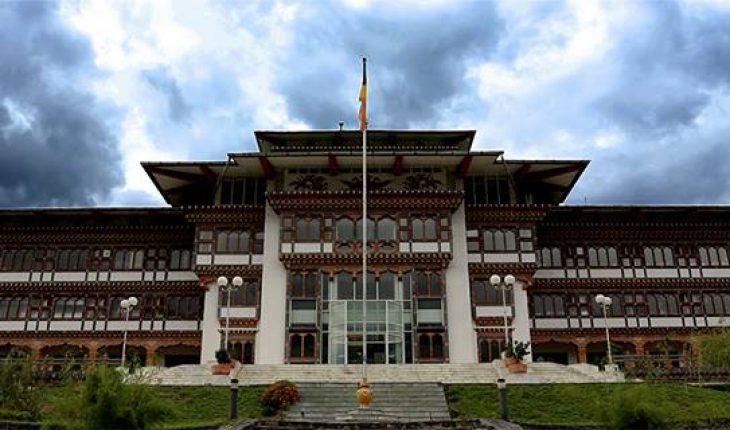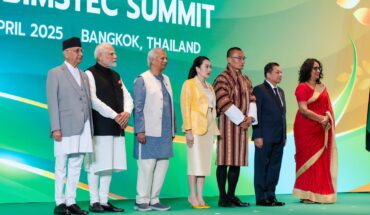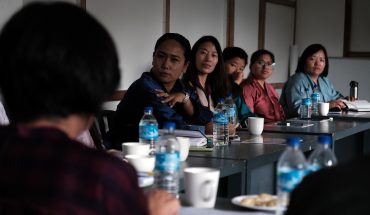
…with stronger national nutrition measures
NGAWANG JAMPHEL | Thimphu
Anemia, often described as a silent but serious health crisis, continues to challenge Bhutan despite decades of interventions.
The recently released National Health Survey (NHS) 2023 shows that anemia remains widespread, particularly among women, adolescents, and children, raising concerns about its long-term impacts on health, productivity, and national development.
The data paints a worrying picture. Nearly 41 percent of non-pregnant women between 15 and 49 years of age are anemic, while 33.3 percent of pregnant women fall within the same category.
Adolescents aged 10 to 19 years report a prevalence rate of 36.5 percent, and children between six months and five years record the highest rate at 44.7 percent.
Health officials warn that these figures point to an urgent need for stronger, more targeted nutrition interventions, particularly as Bhutan aims to achieve its Sustainable Development Goal (SDG) 2 target of zero hunger and malnutrition by 2030.
Globally, anemia affects half a billion women of reproductive age and 269 million children under five, with the greatest burden falling on low- and middle-income countries.
The World Health Assembly, in 2012, endorsed anemia reduction as one of six global nutrition targets for 2025, aiming for a 50 percent reduction among women of reproductive age.
Bhutan has committed to align its efforts with this global target. Yet, the NHS 2023 findings show that the country is still some distance away from meeting the target, with anemia persisting as a major obstacle to improving the health and wellbeing of its people.
Experts stress that the consequences of anemia extend far beyond individual health.
In women, anemia increases the risk of complications during pregnancy and childbirth. In children, it hinders growth, learning, and cognitive development, while also weakening immunity and increasing vulnerability to other illnesses.
For Bhutan, where human resources are a vital engine of national progress, the persistence of anemia represents not only a health challenge but also a development concern.
In response, Bhutan has scaled up several nutrition initiatives over the years, adopting a life-cycle approach that addresses the needs of children, adolescents, and women of reproductive age.
For mothers and pregnant women, the government has introduced nationwide preconception care since May 2025, providing folic acid supplements, iron and multiple micronutrient supplements, and nutrition counselling.
Conditional cash transfer programs are also being introduced from 2025 to encourage healthier practices during pregnancy and lactation.
For children, micronutrient powder programs have been in place since 2019, along with Vitamin A supplementation introduced as early as 1984 and routine deworming since 1988.
Infant and young child feeding (IYCF) services are provided at all hospitals and primary health centers, coupled with growth monitoring and counselling to promote healthier diets from an early age.
Adolescents, who represent a vulnerable group often overlooked in nutrition policy, are now covered under specific programs. Since 2017, fortified rice and oil have been provided in all public schools.
In 2025, tea was replaced with fortified milk in school meals, while the “One Child, One Egg” initiative was rolled out in February to improve protein intake among students.
Weekly iron-folic acid supplements are also being distributed, supported by nutrition education campaigns to encourage better food choices.
Despite these efforts, several challenges remain. Compliance with supplement programs such as micronutrient powders, multiple micronutrient supplements, and iron-folic acid tablets remains inconsistent.
The NHS 2023 further highlights gaps in dietary diversity, showing that many Bhutanese households continue to rely heavily on cereals, with lower consumption of fruits, vegetables, eggs, and pulses. This imbalance limits the intake of essential nutrients needed to prevent anemia.
Another emerging concern is the high level of lead exposure among Bhutanese children.
According to the survey, more than 73 percent of children aged one to six years recorded blood lead levels above the safety threshold of 3.5 micrograms per deciliter.
Pregnant and breastfeeding women, as well as children in monastic institutions, also recorded concerningly high levels.
Lead exposure not only increases the risk of anemia by damaging bone marrow and shortening red blood cell survival but also poses other long-term health risks.
To address these concerns, Bhutan is preparing a new National Nutrition Strategy and Action Plan (NNSAP) for 2026–2030, which will include a comprehensive review and update of the national anemia control program.
The plan emphasizes strengthening and expanding existing interventions, improving compliance rates, and promoting healthier dietary diversity across the population.
It also calls for stronger multisectoral partnerships, engaging not just health institutions but also schools, monastic institutions, and community organizations in the fight against anemia.
Health experts underline that anemia is both preventable and treatable. With sustained political commitment, effective coordination, and community participation, Bhutan has the potential to reverse the current trend and meet its global and national targets.
The government’s renewed focus on fortified foods, school-based nutrition programs, and maternal health interventions reflects a growing recognition that anemia is not just a health issue, but one that directly influences the country’s social and economic future.
As Bhutan looks ahead to the next five years, the fight against anemia will be central to its efforts to build a healthier, more productive population.
The message from health leaders is clear: anemia may be a silent crisis, but it is a preventable one.





